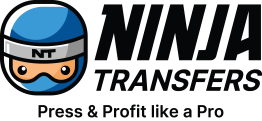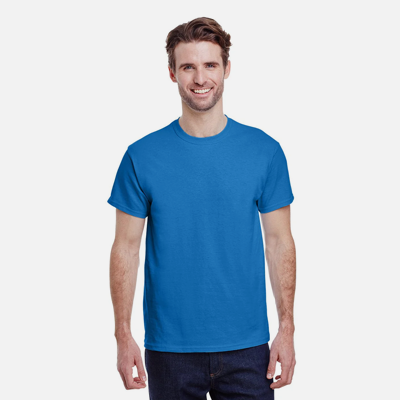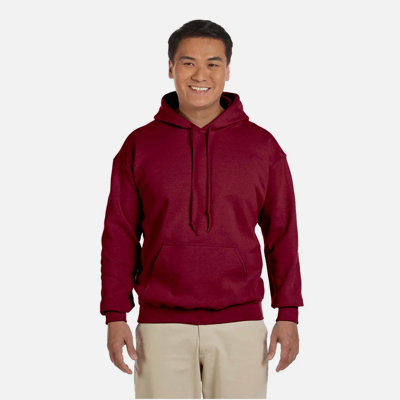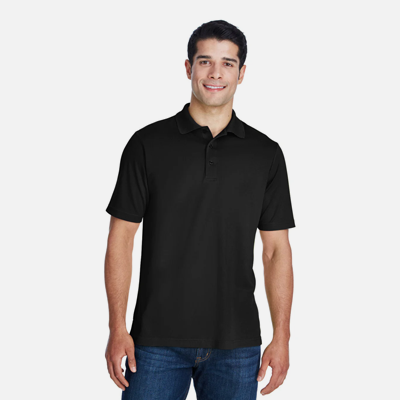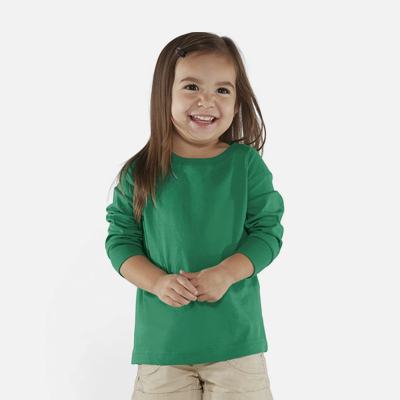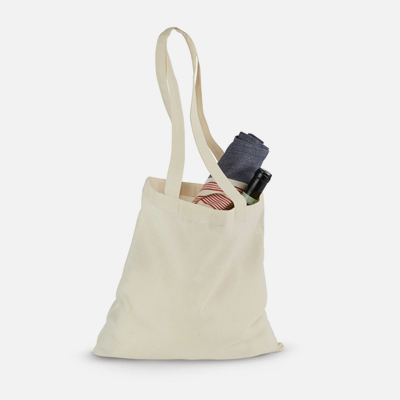Pocket printing can be tricky. Whether you're dealing with the chest pocket of a polo, the back pocket of a pair of jeans, or the roomy front pouch of a hoodie, applying DTF transfers to these small, often awkwardly positioned areas presents unique challenges. But don't let that deter you from mastering this valuable skill.
In this guide, we unpack the essentials of pocket printing, from core principles to practical techniques. Whether you're working with a heat press, a Cricut, or even a household iron, we explore various methods to achieve smooth, durable pocket prints and share tips to elevate your game. So grab your transfers, and let's turn those pockets into prime real estate for eye-catching designs.

Pocket pressing principles
Before we dive into specific techniques, here are the basic principles for pocket-pressing success:
- Isolate the print area: Focusing your heat and pressure on just the pocket for best results.
- Create a smooth, flat print surface: The key to a flawless pocket print is working around the raised edges of the pocket seams and eliminating bumps and wrinkles.
- Elevate the print zone: Raising the pocket above surrounding seams ensures flush contact with your heat source and DTF transfers.
- Cushion the entire area: A soft underlayer allows any raised edges to sink in while maintaining a level printing surface for the transfer.
Methods for pressing on pockets
With the principles in mind, let's break down the various methods for pressing DTF transfers onto pockets. Each technique applies our core concepts in different ways, giving you flexibility based on your equipment and project needs. We cover both specialized tools and creative workarounds so you can tackle pocket prints no matter your setup.
Smaller platen
Many heat press machines come with interchangeable bottom platens, including specialized sizes for pockets. These compact platens are designed to fit snugly inside various pocket types, creating an ideal flat surface for printing while isolating the print area from the rest of the garment.
For larger pockets, such as back pants pockets or hoodie pockets, a sleeve platen can often do the trick. Simply thread the pocket onto the narrow platen, ensuring the rest of the garment hangs free. In some cases, a hat press can even be used for pocket printing if the pocket can be threaded onto it effectively.
Some heat presses offer multi-pocket platens, typically with three prongs, allowing you to press multiple pockets simultaneously - a real time-saver for larger production runs. By using a platen that closely matches your pocket size, you not only improve print quality but also reduce the risk of scorching or damaging the surrounding fabric. Learn about how to pick a heat press.

Heat press pillows
Heat press pillows are versatile tools that can significantly improve your pocket printing results. These cushioned pads come in various sizes and are designed to be inserted between fabric layers, directly under the print area.
For pocket printing, choose a pillow slightly larger than the pocket itself. Place it underneath the entire pocket area, allowing the raised seams to sink into the cushion when pressure is applied. This creates a smooth, flat print surface while maintaining even contact with the heat source.
While the smallest heat press pillows may not fit into standard left chest pockets, they're ideal for larger pockets like those on the back of pants or on hoodies. The pillow's ability to conform to the pocket's shape helps distribute pressure evenly, ensuring consistent transfer application even over seams and edges.

Mousepads
Mousepads? Yes. They offer an ingenious and cost-effective solution for pocket printing. Their dense foam composition provides the perfect balance of cushioning and stability, making them an excellent alternative to specialized heat press pillows.
To use mousepads for pocket printing, simply cut them to fit your pocket dimensions. A good starting size is approximately 4" x 5", but you may need to go smaller for certain pockets.
Pro tip: Snip off the corners or round them slightly to make insertion easier. Once cut to size, slip the mousepad inside the pocket before pressing. This elevates the print area above the raised edges of the pocket seam, allowing for flush contact with the heat source.
Consider ordering mousepads in bulk so you can create a variety of sizes to have on hand. This way, you'll be prepared for any pocket printing challenge that comes your way, from small chest pockets to larger back pockets. Having a diverse set of custom-cut mousepads in your toolkit ensures you're always ready to tackle different garment styles and pocket sizes efficiently.

Folded parchment paper
When you need a quick, readily available solution for pocket printing, look no further than your supply of parchment paper. This common heat-pressing accessory can double as an effective pocket insert for a polo or a t-shirt, following the same principles as mousepads or heat-press pillows.
To create a parchment paper insert, start by folding a sheet repeatedly until you achieve a thickness of at least half an inch. Shape it to match the dimensions of the pocket you're working with. The goal is to create a cushion that's firm enough to elevate the print area above the pocket's seams yet soft enough to allow those seams to sink in slightly when pressure is applied.
Keep in mind that you're not limited to parchment paper; butcher paper or craft paper can work just as well. The key is to create a stack that's substantial enough to provide the necessary lift and cushioning. While not as durable as mousepads or specialized pillows, this method shines in its simplicity and accessibility, making it perfect for occasional pocket prints or when you're in a pinch.

Mini Cricut or home iron
Even if you have a full-sized heat press, don't overlook the benefits of smaller tools like a Mini Cricut or a household iron for pocket printing. These compact devices offer precision and control that can be particularly advantageous when working with small pocket designs.
A Mini Cricut, with its small pressing surface, is ideally suited for pocket-sized prints. It allows you to apply heat directly to the transfer area without affecting the surrounding fabric or struggling with raised seams. This targeted approach not only ensures a clean application but also reduces the risk of scorching larger areas of the garment.
Similarly, the narrow front tip of a household iron can be surprisingly effective for pocket printing. When using an iron, make sure to set the correct temperature for your transfer type and apply firm, even pressure. While it may take some practice to achieve consistent results, the iron's maneuverability can be a real asset when navigating tricky pocket contours. Whether you're using a Cricut or an iron, these tools shine in situations where a full-sized heat press might be overkill or impractical.

Pocket printing tips
Now that we've covered the methods let's go over some key tips to elevate your pocket printing game. These insights will help you navigate common challenges, optimize your designs, and achieve consistent professional-quality results.
- Design size: Keep your pocket designs modest for best results. Hoodie pockets offer more real estate, potentially accommodating designs up to 6" x 4", but always ensure your design fits comfortably on the smallest size in your production run. Oversized designs risk touching raised seams, compromising print quality and durability. Consult our transfer placement guide for more info.
- Design details: Simplicity is key for pocket prints. Avoid intricate designs, small text, or free-floating elements that can cause issues during peeling and adhesion. Opt for designs where text and details are contained within a solid shape. While hoodie pockets allow for more creativity due to their larger size, most pocket designs are simple logos. Get more DTF design tips for beginners.
- Use a silicone garment protector pad: These durable, reusable pads are a game-changer for pocket printing. Lay one over your transfer before pressing, or attach it to your top platen with magnets for consistent use. Silicone protector pads excel at distributing heat evenly and provide extra cushioning, which is crucial when dealing with pocket seams and other protruding elements.
- Always do a second press: A second press ensures maximum durability by fully setting the adhesive and bonding the transfer to the fabric. It's particularly crucial for pockets, which often endure more wear and tear. After peeling off the transfer film, cover the design with parchment paper or your silicone pad and press again. Refer to our video and detailed instructions.
- Adjust your pressure: When using inserts like heat press pillows, mousepads, or folded paper, remember to dial back your heat press pressure. Most presses have a manual adjustment knob - use it. The extra thickness from your insert means you'll need less pressure to achieve proper contact. Take the time to find the right balance before starting a large production run.

Pocket printing perfected: Achieving seamless success
Pocket printing doesn't have to be a pain point in your DTF transfer process. With the right techniques and a bit of creativity, you can turn these small spaces into standout features on any garment. Whether you're using specialized equipment or crafting DIY solutions, the key is to apply our core principles: create a smooth surface, isolate the print area, elevate the design, and provide proper cushioning.
Practice makes perfect; don't be afraid to experiment with different methods to find what works best for your specific projects and equipment. When you're ready to take your pocket printing to the next level, Ninja Transfers is here to support you with our high-quality, custom-printed DTF transfers and supplies. Plus, you can streamline your process with one-stop shopping for all your garment needs at Ninja Blanks. So, pocket these new skills and watch your custom apparel business grow.
